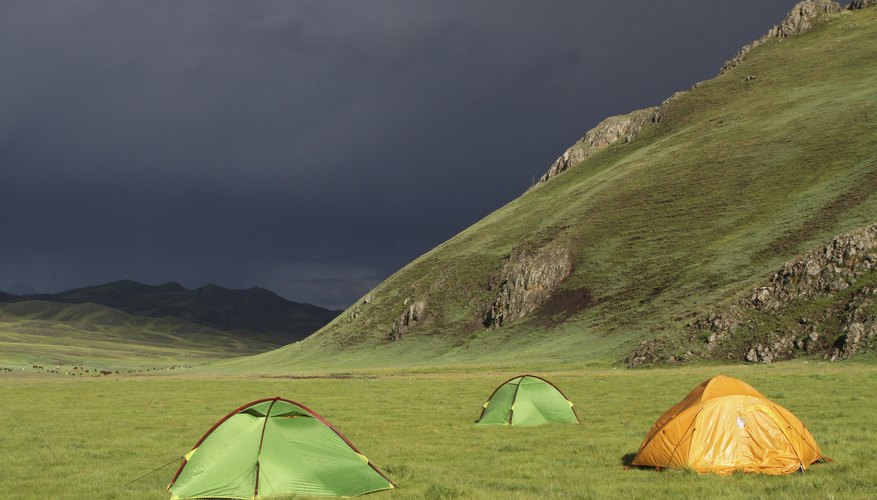
Lightning storms can occur anytime of the year, however they are most common during spring and summer. This is also the time of year when many people enjoy camping. Knowing how to respond to the threat of lightning while camping in a pop-up tent camper can save your life.
Danger
In the United States, about 25 million lightning flashes occur annually. Such flashes cause an average of 58 deaths annually. In addition, hundreds of individuals are injured by lightning strikes, often causing severe neurological damage, such as memory loss, attention deficit, sleep disorders and dizziness. Being outside during a lightning storm is risky business.
Shelter
According to the National Weather Service website, the best shelter to be in during a lightning storm is a building with electrical power or outdoor plumbing or a vehicle with a hard, metal frame that encloses its passengers. Unsafe vehicles, however, are listed as convertibles and golf carts, which do not have the solid, metal frame. Pop-up campers, which are predominantly sided with fabric-like material, are unsafe shelters during a lightning storm.
Faraday Cage
The Faraday Cage phenomenon makes solid, metal-framed vehicles safe shelters. Lightning will travel around the outside of a metal-framed vehicle, essentially protecting the passengers within from electrical shock. As long as the passenger does not make contact with the outer metal shell by touching internal parts such as the steering wheel, radio knob or door handle, he will be safe. The Faraday Cage phenomenon explains why a solid metal vehicle is a much safer shelter compared to a pop-up tent camper with soft walls.
Precautions
If your only shelter option during a lightning storm is a pop-up camper, take precautions to minimize the risk of being struck by lightning. Do not set up your pop-up camper near metal structures, power lines or other objects that would attract lightning. Try not to establish your campsite on top of a hill, in open clearings, near the tallest trees in the area or by ones showing signs of prior lightning damage. When inside your pop-up camper during a lightning storm, do not touch any part of the metal frame.
Awareness
When outdoors, always be alert to weather conditions. Camp with a radio and listen to current forecasts. Remain watchful of the sky for impending storms. If you can hear thunder, lightning's not far behind. At the first sound of a storm, you should take shelter immediately. Keep a solid, metal-framed vehicle near your camp site to use as your safe shelter. Always wait 30 minutes after the last clap of thunder before leaving your shelter.
References
Writer Bio
Susanne Preble has been sharing her equestrian insight and travel experiences with readers since 2003. She has been teaching, training, and managing professional facilities for more than 20 years. Preble holds an Associate of Arts in accounting and will soon obtain her Bachelor of Science in business administration. She graduated from the University of Phoenix in 2008.



